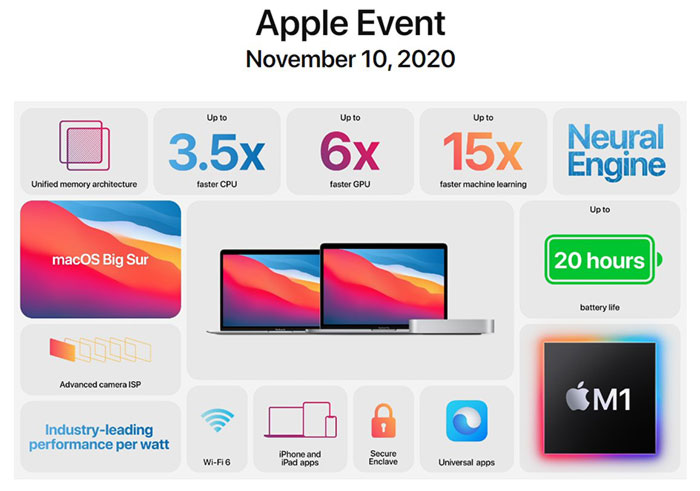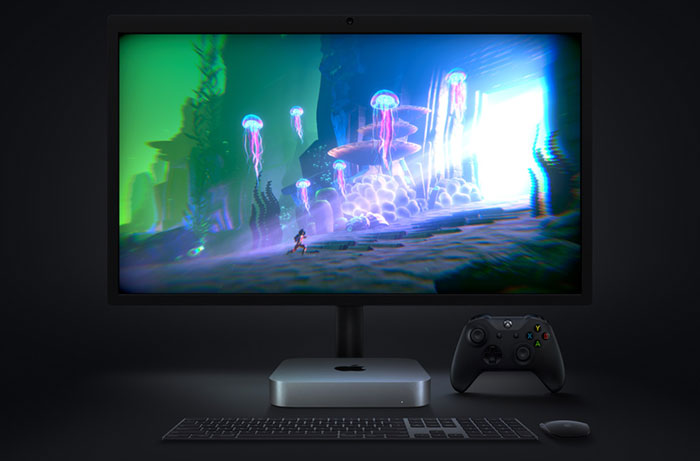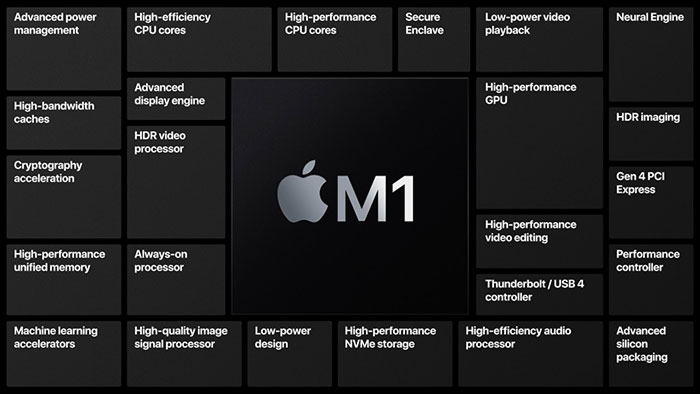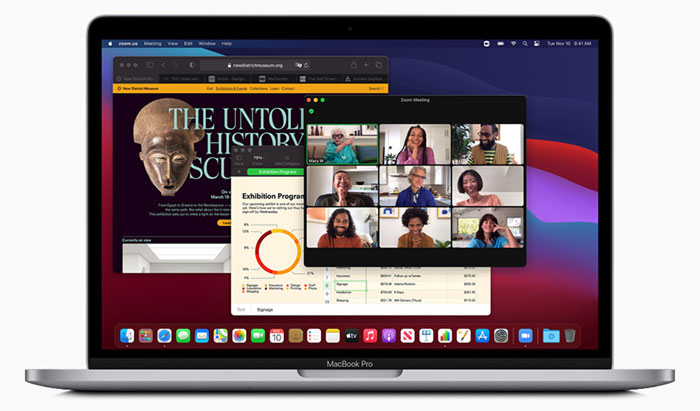As expected, Apple took the wraps off a number of 'Apple Silicon' powered Mac computers. What transpired was the launch of the new MacBook Air (from $999), 13-inch MacBook Pro (from $1,299), and Mac mini (from $699) powered by Apple's "revolutionary M1" chip. The presentation was packed with superlative claims for these computers and especially the M1 Mac SoC but Apple's performance claims were hard to gauge or reference, as you will find out later.

"The introduction of three new Macs featuring Apple's breakthrough M1 chip represents a bold change that was years in the making, and marks a truly historic day for the Mac and for Apple," said Tim Cook, Apple's CEO, who went on to extol the virtues of the new Mac OS Big Sur computers and their "mind-blowing performance, extraordinary battery life, and access to more software and apps than ever before".

All the new computers seem to be based upon the same chip, at the moment there seems to be just one version of the M1 SoC. Apple boasted that the M1 is the first PC chip that has been built on cutting-edge 5nm process technology, packing 16 billion transistors, and that it is the most powerful chip it has ever designed.

Key features of the M1 can be seen in the 'block diagrams' above and below. In brief you can see that the M1 utilises four big (performance) and four small (efficiency) CPU cores, up to an eight core GPU, and a 16 core Neural Engine for ML acceleration. Other important aspects of the SoC are its unified memory, advanced display and HDR processing ISPs, with low power video playback, PCIe 4.0, Thunderbolt / USB 4, and secure enclave technology. With the unified memory on chip it means that Apple has different M1 SoCs for the 8GB and 16GB computers in the lineup.

Each of the three new computers was accompanied with big claims about the qualities bit to talk about the new Mac SoC on its own merits Apple rolled out Johny Srouji, its SVP of Hardware Technologies. "When it comes to low-power silicon, M1 has the world’s fastest CPU core, the world’s fastest integrated graphics in a personal computer, and the amazing machine learning performance of the Apple Neural Engine," claimed Srouji. "With its unique combination of remarkable performance, powerful features, and incredible efficiency, M1 is by far the best chip we’ve ever created."
You can read more about the individual new Mac computers in the press release or associated product pages but I will highlight just the M1-powered 13-inch MacBook Pro, as an example of the change Apple has made and benefits it claims. For this premium laptop Apple claims its M1 processor powers general computing applications up to 2.8x faster, GPU calculations up to 5x faster and is up to 3x faster than the best selling Windows laptop rival in its class. Furthermore, battery life is now up to 17 hours of connected web browsing, or 20 hours of video playback. Some inter-generational application performance specific bullet points from Apple are reproduced below:
- Build code in Xcode up to 2.8x faster.
- Render a complex 3D title in Final Cut Pro up to 5.9x faster.
- Fluidly design intricate game scenes in Unity Editor up to 3.5x faster.
- Perform ML tasks in Create ML up to 11x faster.
- Separate out beats, instrumentals, and vocal tracks from a recording in real time in djay Pro AI, thanks to the amazing performance of the Neural Engine.
- Play back full-quality, 8K ProRes video in DaVinci Resolve without dropping a single frame.
- Compile four times as much code on a single charge, thanks to the game-changing performance per watt of the M1 chip.
Several and tech industry observers commented upon Apple's boasts and lack of reference points that would have helped make the performance comparisons meaningful. Senior Analyst Patrick Moorhead was rather pointed about Apple's lack of substantiation, and WikiChip's David Schor would have welcomed more qualifiers.

Crucially important to the success of the Apple Silicon Macs is software support going forward. Apple has done a number of things already; optimised Mac OS Big Sur for the M1 chip, including important built-in applications like Safari. Apps that don't have a 'universal' code version can still run through Rosetta 2. Additionally iPhone and iPad apps can now run directly on the M1 SoC Macs.

Earlier in the year we heard about the start of the two year transition from Intel to Arm for all Macs. These first three are a good start but Apple says that the release of these Macs coincides with beginning of the two year clock countdown (so it didn't start with the earlier announcement).













